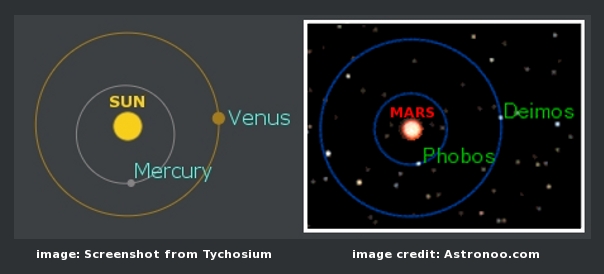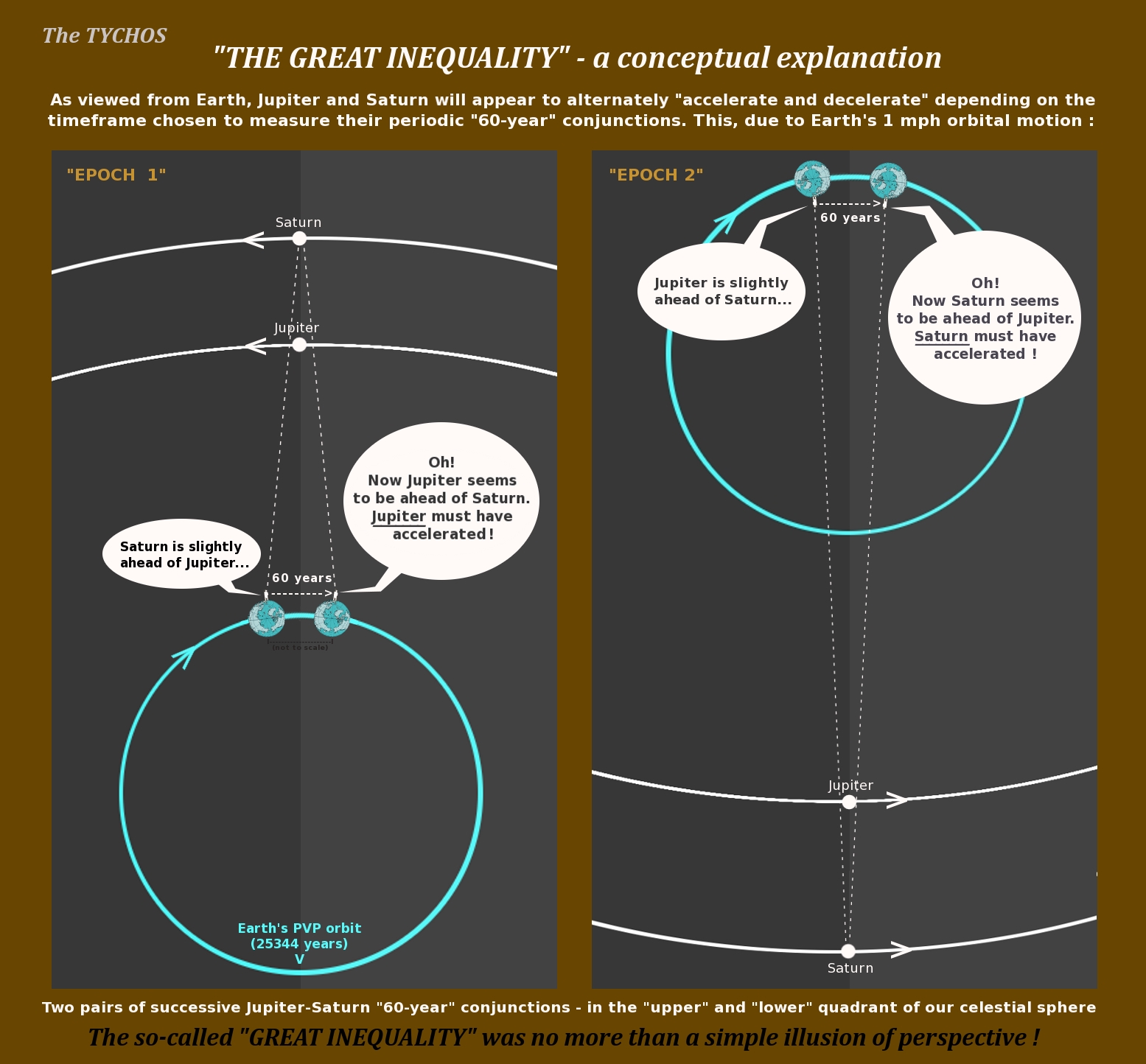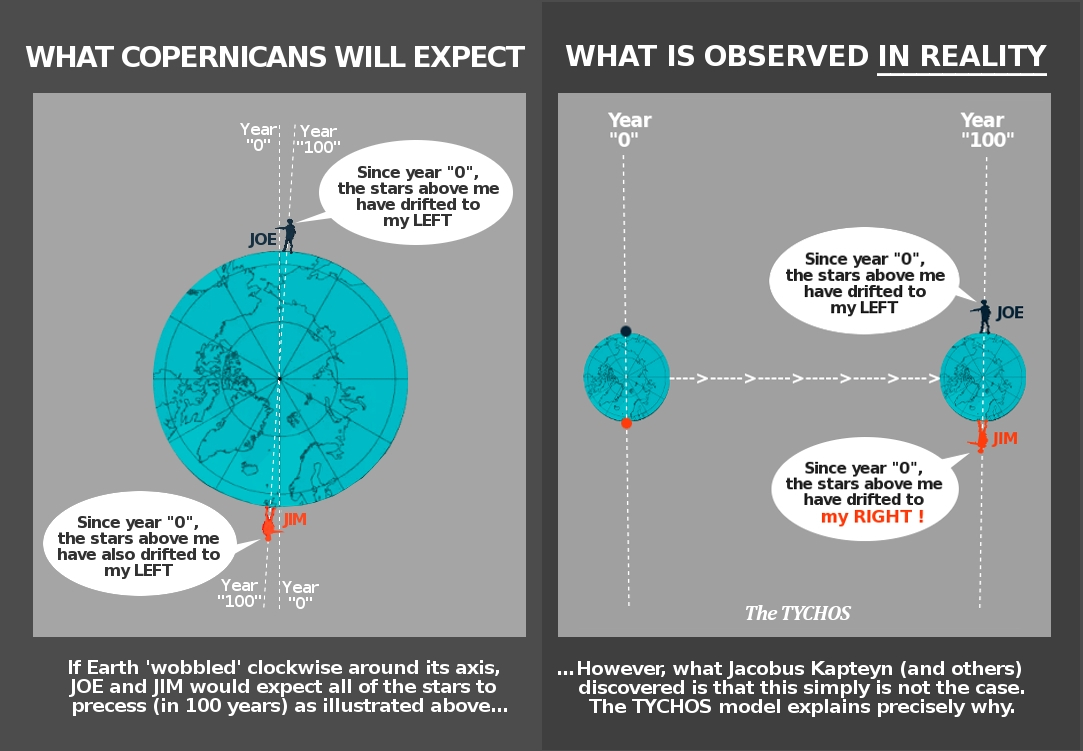The TYCHOS model
Here are the main point to consider about it:
- The solar system is actually a binary system where the Sun and Mars are the two stars.
- The earth is at the center of the binary system (not the center of the universe, just the binary system itself)
- The earth has an orbit called PVP orbit which it takes 25344 years to go around. Earth travels this orbit at the snail pase of 1 mph. This orbits accounts for the Precession of the Equinoxes.
- Mercury and Venus are the Moons of the sun.. as Phobos and Deimos are the Moons of Mars
- In the TYCHOS stars are much closer than currently believed. 43622x times closer.
- All orbits are circular with constant speed.
Here are few captions with really interesting things the model features:
The model:

Is the solar system actually binary?
Comparison of Sun's moons and Mar's moons

- → Venus’ diameter is about 2.5 times larger than Mercury’s diameter.
- → Deimos’ orbital diameter is about 2.5 times larger than Phobos’ orbital diameter.
- → Phobos’ diameter is about 1.8 times larger than Deimos’ diameter.
- → Venus’ orbital diameter is about 1.8 times larger than Mercury’s orbital diameter.


'''The results of most of the various Michelson-type experiments performed over the years have, as shown by Fuerxer, detected a ‘speed-of-light variation’ of around 8x10-10, whereas other rigorous experiments (e.g., Kennedy-Thorndike and Ernest Esclangon) have yielded a marginally smaller value of 7x10-10. Fuerxer concluded that the experiments pretty much agreed with each other. This contradicts the widely believed notion that the interferometer experiments conducted by different scientists have mostly yielded inconsistent or ‘null’ results or have been afflicted with systematic errors associated with temperature variations or whatnot.
In scientific annotation, 8x10-10 simply means 0.0000000008, while 7x10-10 means 0.0000000007. For the sake of the following calculus, I will use the averaged value of these two figures to represent the purported ‘speed-of-light variation’ detected by various experiments.
• Average variation factor: (0.0000000008 + 0.0000000007) / 2 = 0.00000000075
• Speed of light = 299792.5 km/s
• Average variation: 299792.5 km/s x 0.00000000075 = 0.000224844 km/s = 0.809439 km/h'''

Hiparcos and Gaia satellites confusing 50% zero parallax, 25% Positive parallax and 25% Negative parallax (geometrically imposible). Explained by the TYCHOS


Bradley's Nutation:

Evidently, Mercury’s perihelion precession just reflects the General Precession of our Solar System, and those ‘anomalous’ 0.43 arcseconds simply represent 1 Mercurian day (i.e., the aforementioned ‘1 unit’ which the Earth would subtract from Mercury if we were revolving around the Sun). So, to recapitulate:
Equinoctial precession observed in the early 20th century = 5026″ per century.
→ Precession of Mercury considered anomalous by heliocentrists = 43″ per century.
→ Mercury’s synodic period = 116.88 days. And 5026″/ 116.88 days ≈ 43″
Ergo: Actual anomalous precession of Mercury = 0″
In fact, even Venus was thought to precess in anomalous fashion:
→ Precession of Venus considered anomalous by heliocentrists = 8.6″ per century
→ Venus’ synodic period = 584.4 days. And 5026″/ 584.4 days ≈ 8.6″
The great Inequality of Jupiter and Saturn solved by the TYCHOS:Ergo: Actual anomalous precession of Venus = 0″





Best regards


Comments
In the TYCHOS stars are much closer than currently believed. 43622x times closer.
All orbits are circular with constant speed.
Absolutely.. for example the sirius system seems to be the twin sister of ours.. so theres a possiblity of Sirius C being an earth like planet. With the reduction factor of 43622x that system is only 1.8 light hours away.
Regarding the possibility of explaining the tychos using ethereal mechanics.. thats why I posted about it here. I would love for Robert to take a look into the model.. because Im convinced that the tychos can be explained using ethereal mechanics since looking at the trace of the celestial objects over the years it seems to be a system of electric nature and ruled by geometry.
Heres a test observation that falsifies the heliocentric model and verifies the TYCHOS